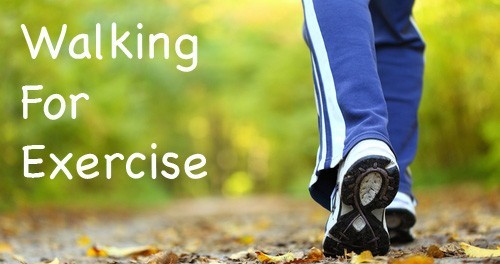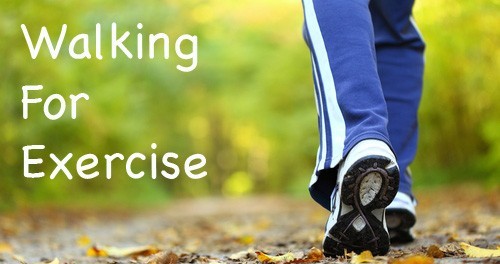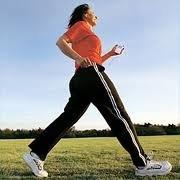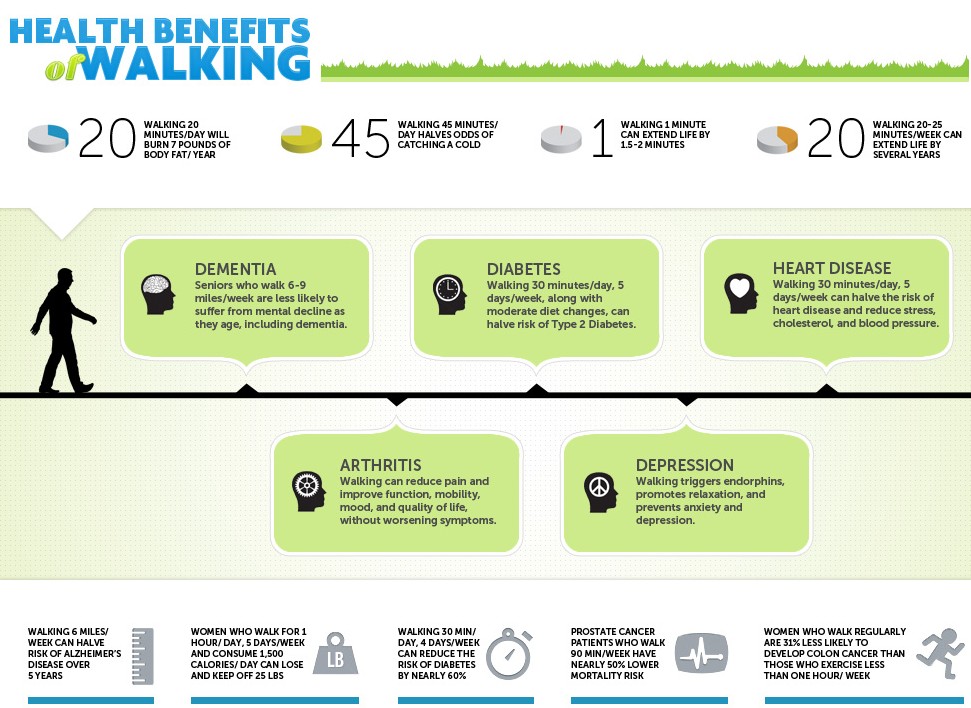Walk Talk Series
Week 3 – Measuring Heart Rate
In Week 3 we explore exercise intensity and how to measure your heart rate and use heart rate zones. On most days, the advanced walkers will have the same assignment as the other walkers.
Do you want to get the most out of your walking workouts, or any kind of cardio exercise? You maximize the benefits of cardiovascular activity when you exercise in the zone of your target heart rate(THR). In general terms, your THR is 60-80% of your maximum heart rate. The Karvonen Method of calculating THR is one of the most effective methods to determine target heart rate because it takes into account resting heart rate. Here’s how to find your THR.
How to take your pulse 
- Place the tips of your index, second and third fingers on the palm side of your other wrist below the base of the thumb. Or, place the tips of your index and second fingers on your lower neck on either side of your windpipe.
- Press lightly with your fingers until you feel the blood pulsing beneath your fingers. You may need to move your fingers around slightly up or down until you feel the pulsing.
- Use a watch with a second hand, or look at a clock with a second hand.
- Count the beats you feel for 10 seconds. Multiply this number by six to get your heart rate (pulse) per minute
1) Find your resting heart rate as soon as you wake up. You can do this by counting your pulse for one minute while still in bed. You may average your heart rate over three mornings to obtain your average resting heart rate (RHR). Add the three readings together, and divide that number by three to get the RHR.
For example, (62 + 65 + 63) / 3= 63. 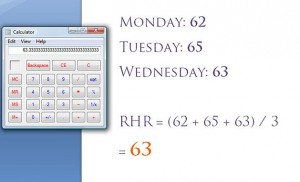
2) Find your maximum heart rate and heart rate reserve.
- Subtract your age from 220. This is your maximum heart rate (HRmax).For example, the HRmax for a 40-year-old would be220 – 40 = 180.
- Subtract your RHR from your HRmax. This is your heart rate reserve (HRmaxRESERVE).For example,HRmaxRESERVE = 180 – 63 = 117
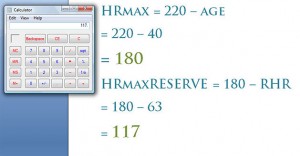
3) Calculate the lower limit of your THR. Figure 60% of the HRmaxRESERVE (multiply by 0.6) and add your RHR to the answer. For example,
(117 * 0.6) + 63 = 133. 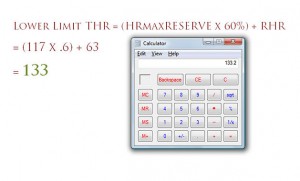 4) Calculate the upper limit of your THR. Figure 80% of the HRmaxRESERVE (multiply by 0.8) and add your RHR to the answer. For example, (117 * 0.8) + 63 = 157.
4) Calculate the upper limit of your THR. Figure 80% of the HRmaxRESERVE (multiply by 0.8) and add your RHR to the answer. For example, (117 * 0.8) + 63 = 157.  Combine the values obtained in steps 3 and 4 and divide by the number 2. This is your target heart rate (THR). For example,
Combine the values obtained in steps 3 and 4 and divide by the number 2. This is your target heart rate (THR). For example,
(133 + 157) / 2 = 145 (You can get the same result by simply multiplying HRmaxRESERVE by 0.70 and adding to it RHR). 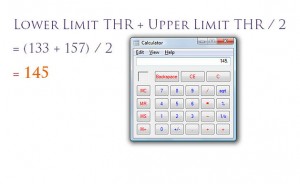
Your heart rate tells you how hard your body is working. At the same speed, different walkers may be getting in an easy workout or a very hard workout – it all depends on your fitness level. By determining your maximum heart rate and calculating which zone you are in, you can vary your workouts or ensure that you are getting what you want out of your workouts.
- 25-50 minute walk at a comfortable pace, with warm-up and stretching before and after
- Practice taking your heart rate
- Warm up with 5 minutes at a very easy pace
- Find a safe spot with a wall or pole to do a 5 minute easy stretching routine
- Now resume your walk at a comfortable pace
- End with 5 minutes of gentle stretching
Advanced walkers: Distance Walk
When to do the Distance Walk
Once per week. Those training for a charity walk or 3-Day Walk should perform two distance days back-to-back each week.
Benefits
Builds endurance and burns off calories (approximately 100 per mile for 150-pound person.) Those training for longer distance events should build up their mileage steadily. Those training for a 5K or 10K competitive walk should exceed the event distance by a mile or two in their distance workout.
Distance Walking Workout
- Start at an easy pace for 5-10 minutes
- Stop and do a stretching and flexibility routine for 5 minutes
- Resume your walk at a pace that brings your heart rate up to 65-80% of your maximum heart rate (MHR) This is a comfortable pace range between being able to speak in sentences to being able to speak only in short phrases
- Walk for 5-10 miles, or longer if you have built up your endurance
- End with 5 minutes of gentle stretching and flexibility exercises.
Nutrition: Want Health? Eat Your Fruits and Veggies 
Recent reviews of medical studies show that eating 5 or more servings a day of fruits and vegetables reduces risk of strokes, diverticulosis, and hypertension. Nutrients found in plants that were credited for the protective roles included fiber, phytochemicals, antioxidants, vitamins and minerals. You can’t get the full range of these in a pill, you need the real source. Eat 5 a day.
A major reason to eat more fruits and vegetables is their nutritiousness. Unless baked in a pie or dripping in butter, most are low in fat and calories–except avocados, coconut and olives, all of which contain fat naturally. Many are excellent sources of the important vitamins A and C and provide ample fiber.
In addition, many fruits and vegetables, particularly dried beans and peas, are significant sources of folate, a B vitamin that can help reduce the risk of certain serious and common birth defects.
Many items, such as raisins, grapes, cherry tomatoes, and bananas, can be eaten on the spot, with minimal preparation. Fruits and vegetables are the “original fast food.”

